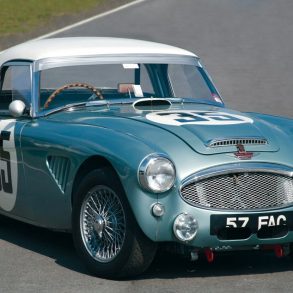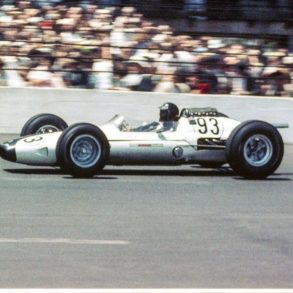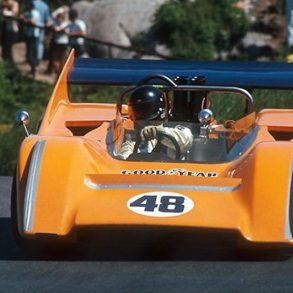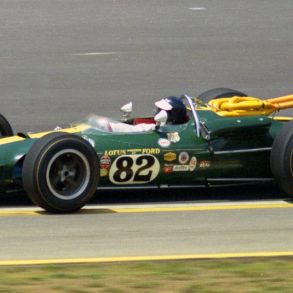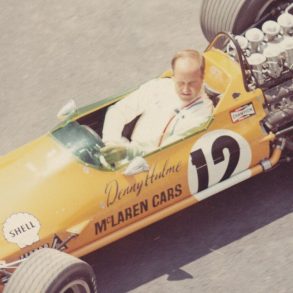Just before the holidays, I had the good fortune of attending a special tribute dinner at Southern California’s Petersen Automotive Museum. The museum holds several of these dinners each year to honor a different facet of automotive or racing history. In the last year or two there have been racing tributes to the Trans-Am series, the Can-Am series and even a special dinner honoring actor James Garner’s involvement in motorsport. However, this most recent dinner was devoted jointly to the history of Riverside Raceway and as a tribute to Dan Gurney. At first blush it might seem an odd combination to honor both a track and a driver on the same night, but in the case of Gurney and Riverside the two names are almost inseparable.
The brainchild of Southern California racer and restaurateur Rudy Cleye (with financial backing from fellow racer John Edgar), construction on Riverside Raceway began in January 1957. Interestingly, as the bulldozers graded the circuit over the next several months, the workers noticed a couple of local kids on motorcycles who repeatedly followed them around the track as they worked. No one at the time could have known that one of those kids would feature so prominently in the future of the track they were building. Who were those kids? Local Riverside boys Skip Hudson and Dan Gurney.
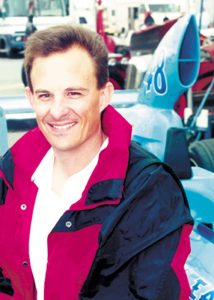
Editor
By fall of that same year, Riverside International Motor Raceway was completed and ready to host its first event, an SCCA Cal Club race held September 21–22, 1957. That first weekend saw Richie Ginther win the main event driving a 4.9- liter Ferrari, a 15-year old Ricardo Rodriguez take an easy win in his Porsche RS and driver John Lawrence lose his life when his MGA flipped over at the same place that Carroll Shelby had badly crashed his Maserati the day before. While these were the major stories that made the headlines from that inaugural weekend, there was another noteworthy story that didn’t get as much press. A young Dan Gurney won his first “sanctioned” race when he drove Cal Bailey’s Corvette to victory in the C-production race. A long love affair between Riverside and Gurney had just begun.
Over the following two decades the professional lives of both Riverside and Gurney would evolve along parallel courses. Riverside went on to host a wide variety of professional races, including sports car, Formula One (yes, Riverside did host a round of Formula One in 1960), Indy car, NASCAR, F5000, Can-Am, off-road and even drag racing. Likewise, Gurney blossomed as well, winning in Formula One, NASCAR, sports cars and Indy cars. While Gurney’s life as a professional racecar driver took him to tracks all over the world, he would inevitably return several times a year to Riverside—usually to great effect. While Gurney raced almost everything imaginable at Riverside, his greatest achievements there were in Indy cars and, oddly enough, stock cars. In Indy cars, Gurney won the Rex Mays 300 two years in a row in 1967 and 1968, but it was at the wheel of a Grand National stock car that Gurney truly earned his crown as the “King of Riverside.”
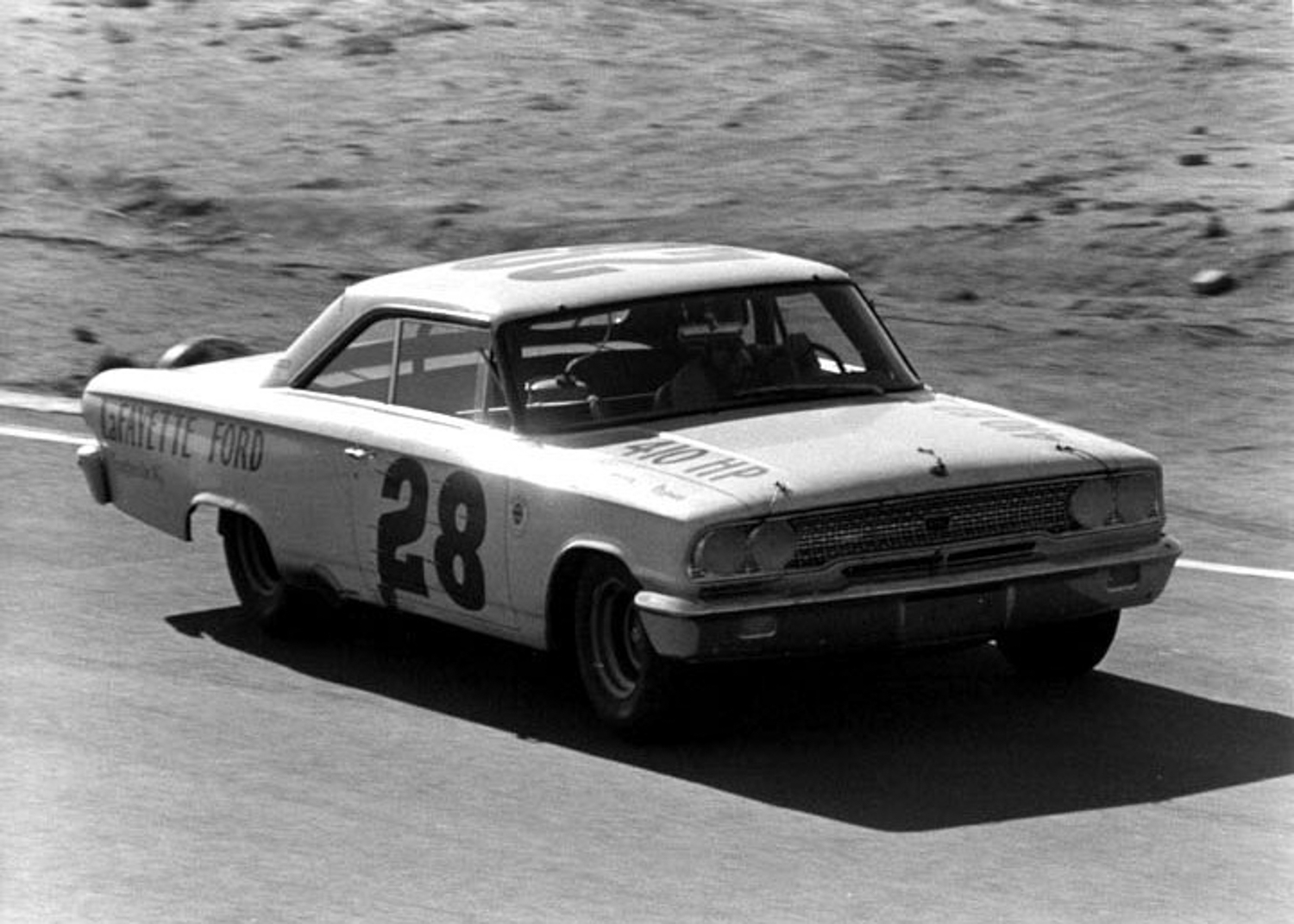
Gurney won his first stock car race at the Southern California track (the Riverside 500) in 1963, and then went on to back it up with an unprecedented string of victories in 1964, 1965, 1966 and 1968. In his foreword to Dick Wallen’s Riverside Raceway: Palace of Speed, Gurney says of his NASCAR success at Riverside, “I raced a lot of different kinds of cars at Riverside, and in the end I had a lot of success with NASCAR stock cars. It was a very special thing, that I had not set out to do, so it was a great gift to have so much success.”
By the early ’70s, Gurney hung up his helmet and concentrated on his efforts as a constructor and team owner. However, his winning ways at Riverside would go on as an owner right up until the course was permanently closed. In fact, there is an almost divine symmetry to the fact that Gurney scored his first victory as a driver in that inaugural race weekend in 1957, and Chris Cord, driving one of Gurney’s IMSA Toyota Celicas, scored one of the final professional victories at Riverside before it closed for good in 1988. Who would have guessed, 30 years prior, that the kid on a motorcycle would have his life so affected by a desolate stretch of earth 60 miles east of Los Angeles?
In the end, I suppose it makes perfect sense that one would honor Dan Gurney and Riverside Raceway together…after all, they’ve been inseparable their whole lives.




